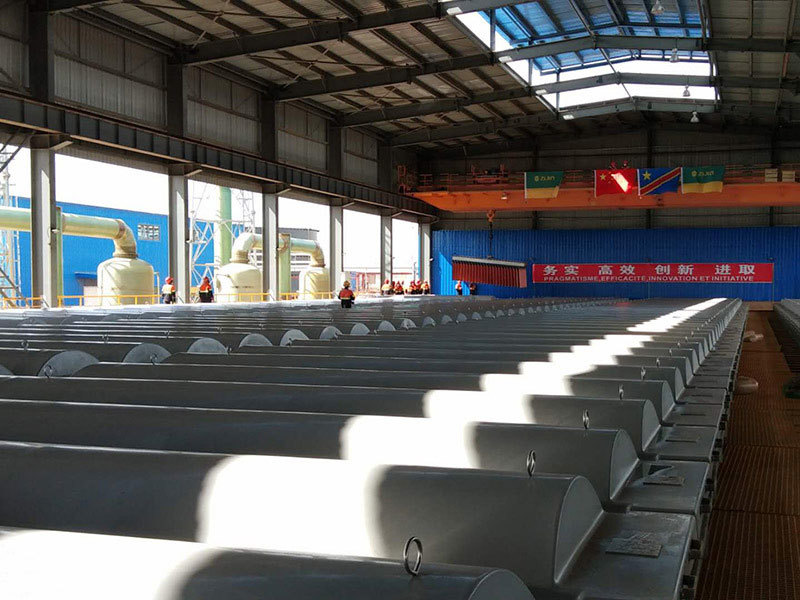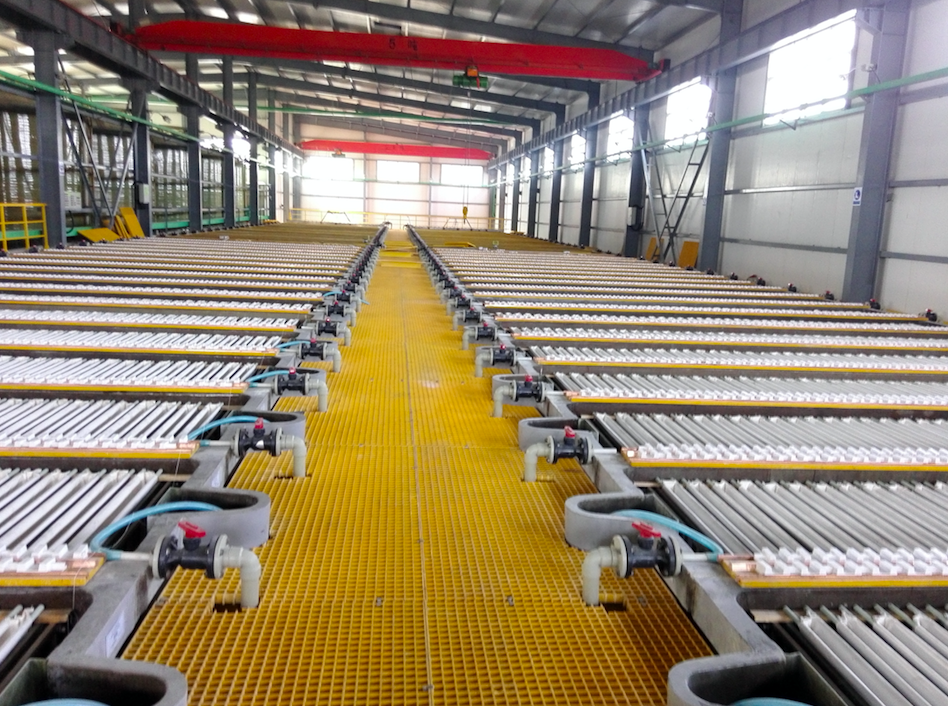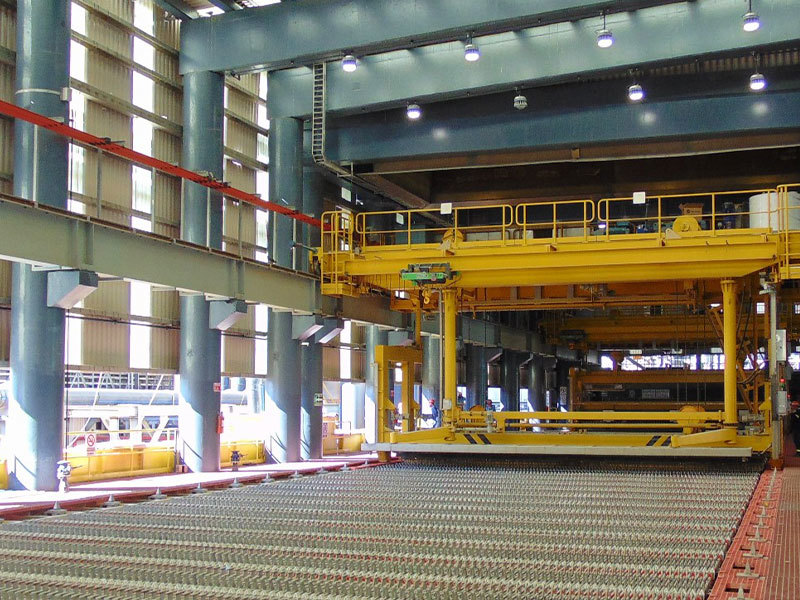Introduction to vinyl resin monolithic electrolytic cells
Electrolytic cells are core equipment in the hydrometallurgical production of non-ferrous metals. The advancement of their technology directly impacts product quality and production efficiency. The vinyl ester resin integral casting electrolytic cell was successfully invented by a US company in the 1990s and began application in electrolytic copper production processes. Due to its excellent corrosion resistance, thin walls, light weight, space-saving design, low maintenance costs, and long service life, it is now widely used worldwide and has been extended to zinc, nickel, and other electrolytic processes.
An electrolytic cell consists of a cell body, anode, and cathode, with most using a diaphragm to separate the anode and cathode chambers. They are classified into three types according to the electrolyte: aqueous solution electrolytic cells, molten salt electrolytic cells, and non-aqueous solution electrolytic cells. When direct current passes through the electrolytic cell, oxidation occurs at the interface between the anode and the solution, and reduction occurs at the interface between the cathode and the solution to produce the desired product. Optimizing the electrolytic cell structure and rationally selecting electrode and diaphragm materials are key to improving current efficiency, reducing cell voltage, and saving energy. In traditional electrolytic cells, the cell body and lining are structurally and functionally independent; once the lining fails, the cell body is quickly corroded. However, the vinyl ester resin electrolytic cell combines support and corrosion protection functions. Made from vinyl ester resin, quartz sand, curing agents, accelerators, etc., using a combination of physical, chemical, and mechanical processing methods to create a multi-base composite material, it boasts excellent corrosion resistance, heat resistance, high mechanical strength, and high compressive strength.
The product features a novel structure, strong integrality, thin cell walls, insulation, and heat insulation, preventing induced currents and improving electrolytic quality and efficiency. In addition, its excellent strength and hardness ensure that the cell body will not be damaged by impacts from the anode and cathode plates, significantly extending the service life of the electrolytic cell. With its unique advantages, the vinyl ester resin integral casting electrolytic cell has become important equipment in the electrolytic process of non-ferrous metal smelting, gradually replacing traditional electrolytic cells and being widely used in the hydrometallurgical industries of copper, zinc, manganese, and nickel.
TAG:
Next
Next:
Related Blog
How to ensure the quality of ethylene vinyl resin electrolytic cells in Hebei?











